163 SACD / TACET’s Four Seasons
Description
The sensation of this recording lies in its extremely clear, direct, warm, and spacious sound. The fact that one can rediscover this oft-overplayed work afresh here is due to the transistor-free tube technology, which captures musical delicacies: violinist Gaede and his Polish colleagues play not only with great precision and finely nuanced dynamics, but also with plenty of bite and expressiveness. (...)
5 reviews for 163 SACD / TACET’s Four Seasons
You must be logged in to post a review.
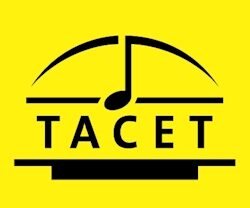
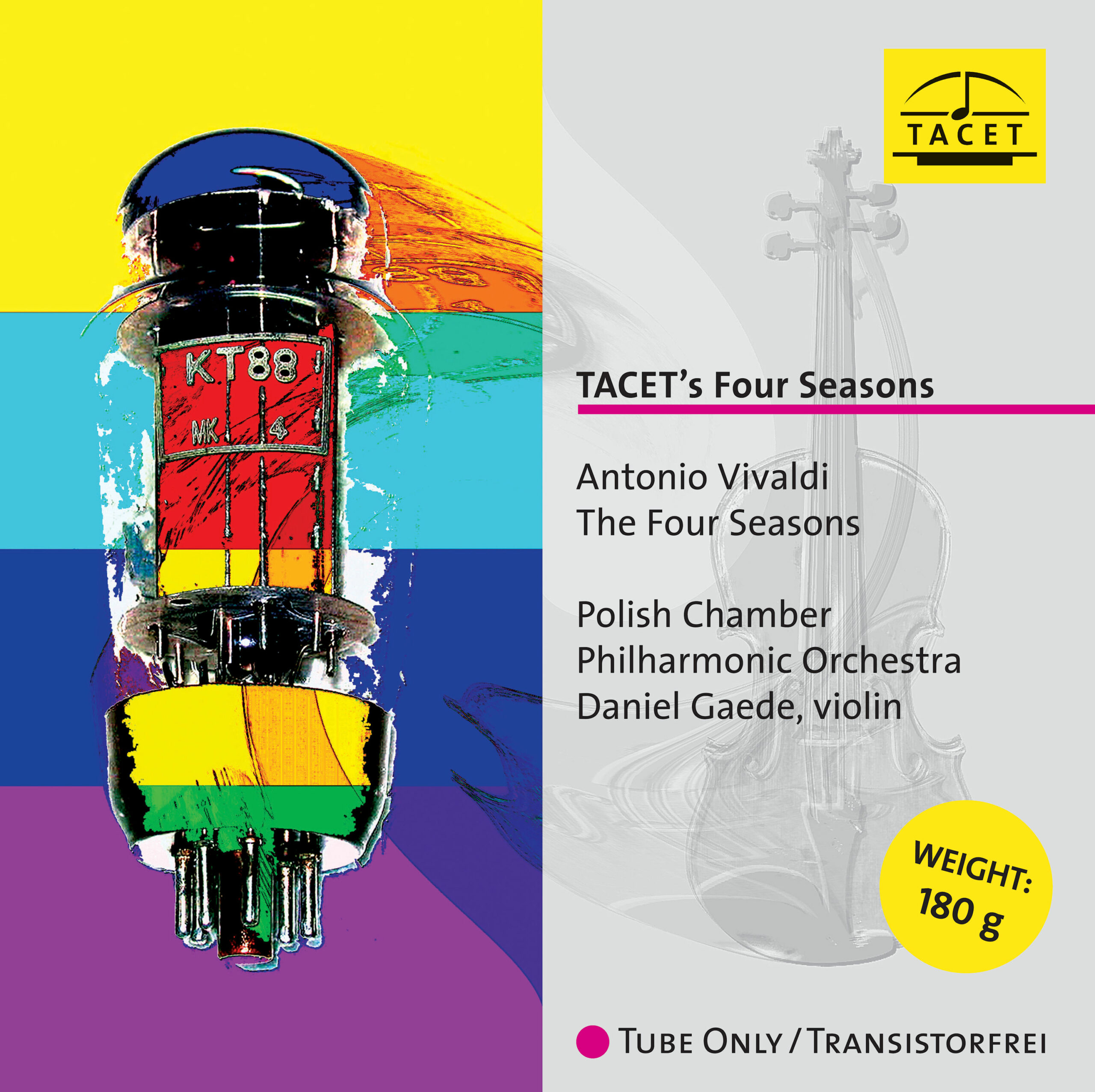
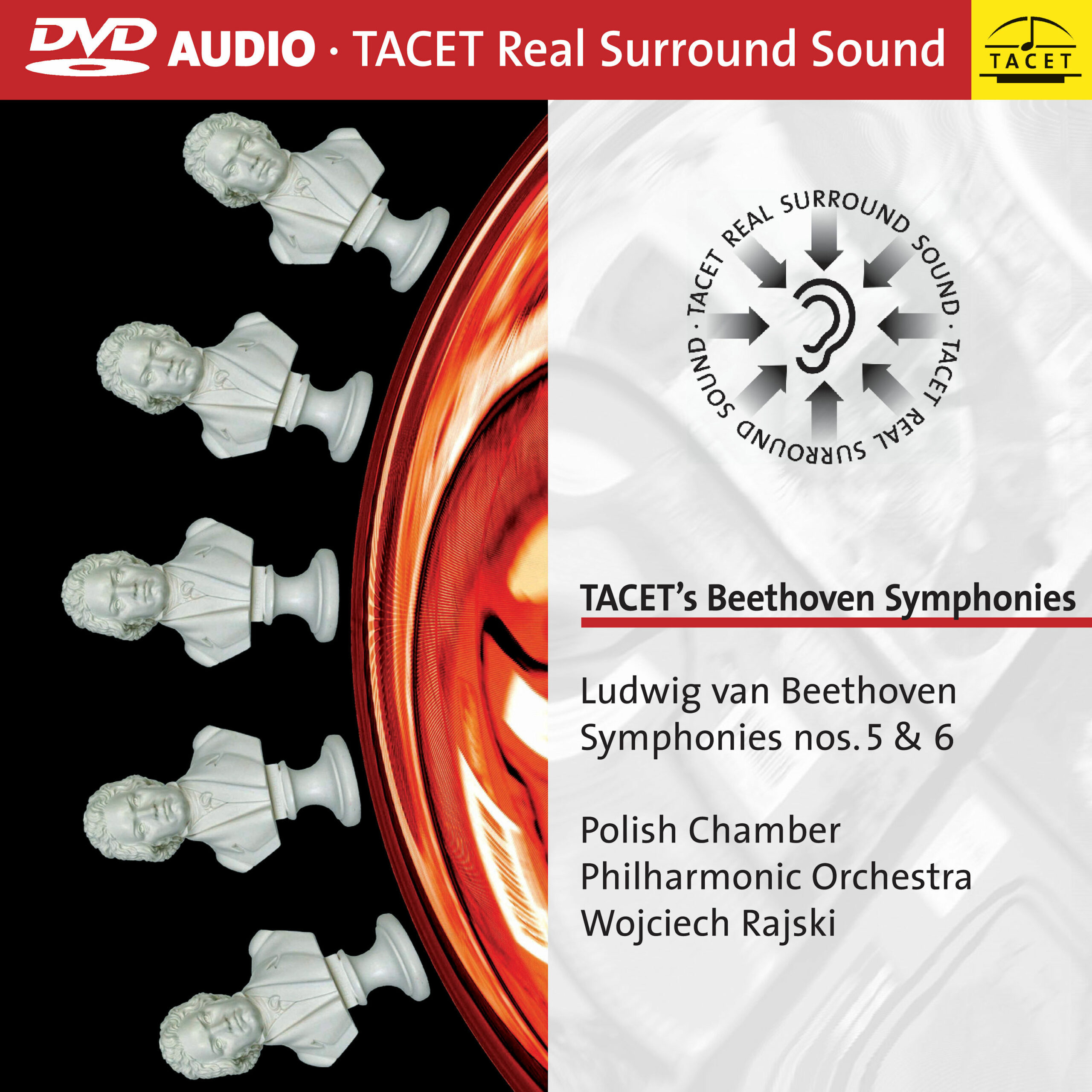
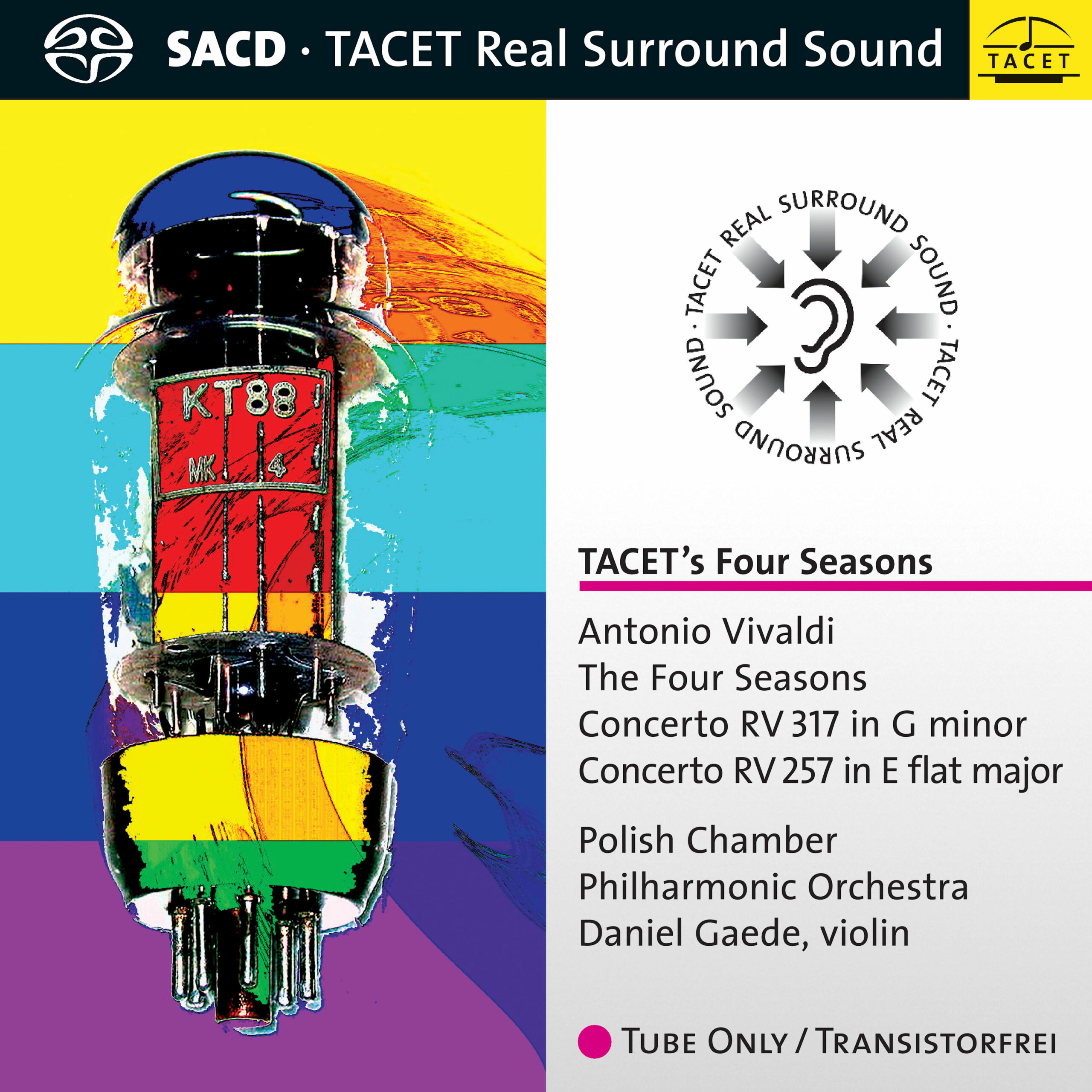
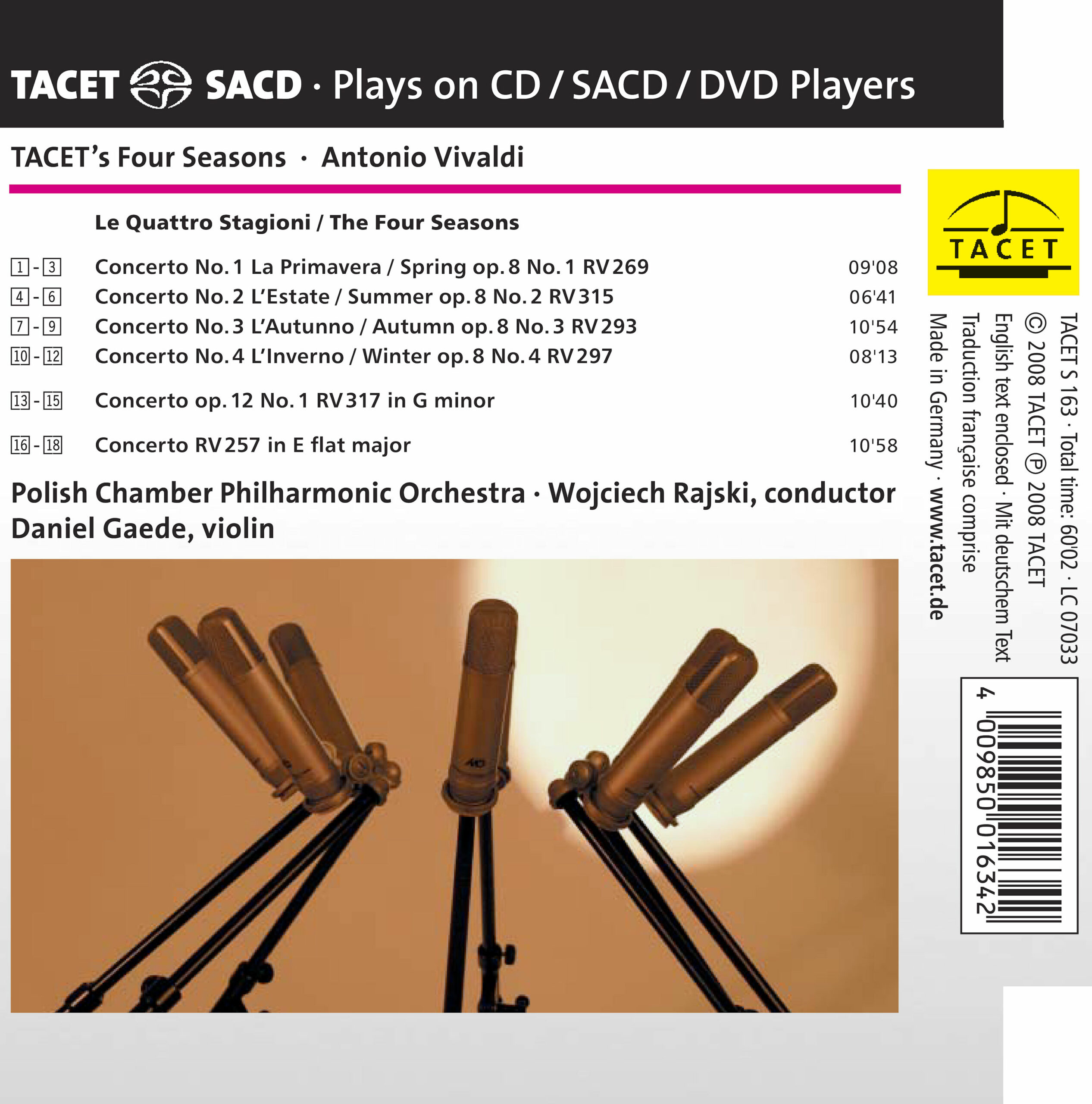
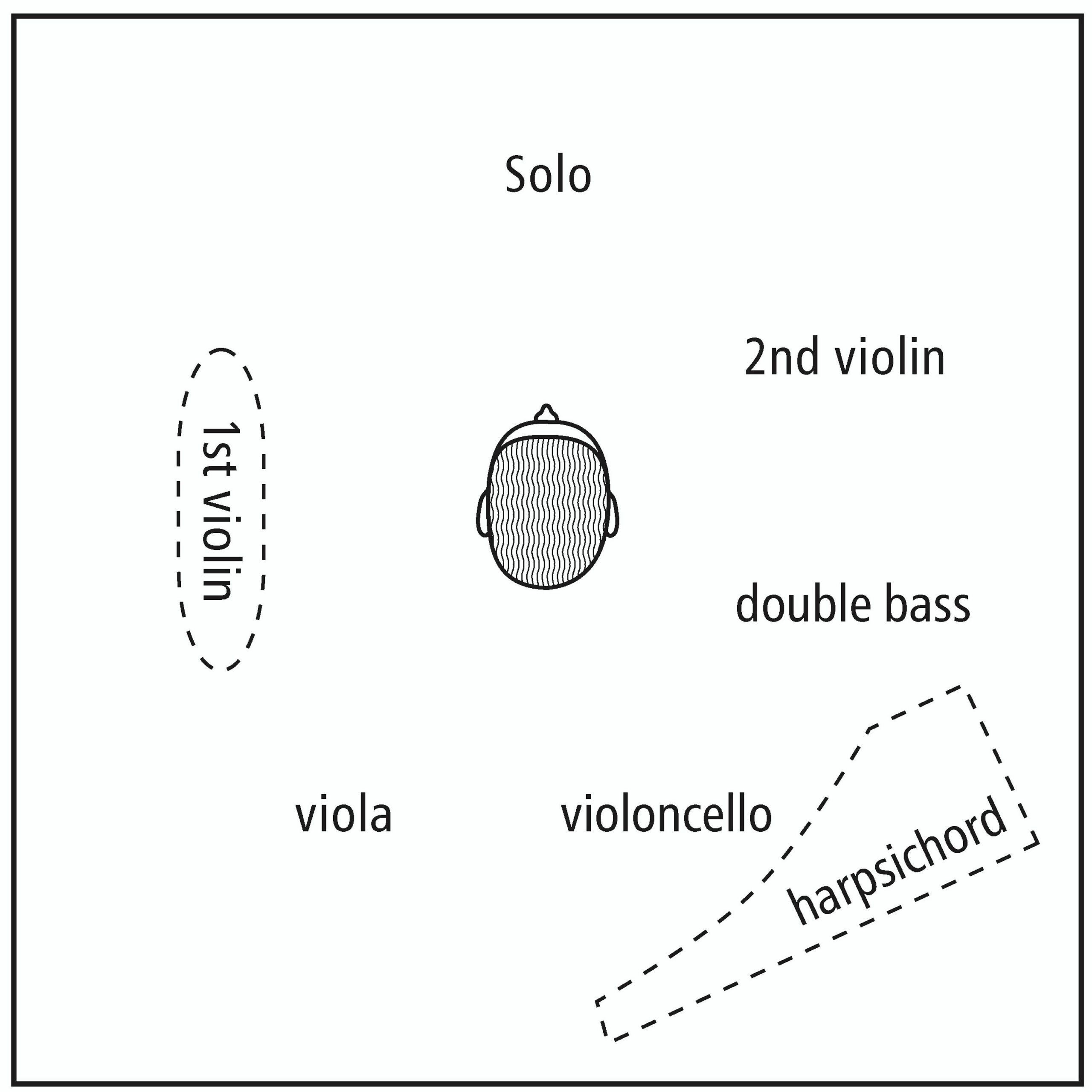


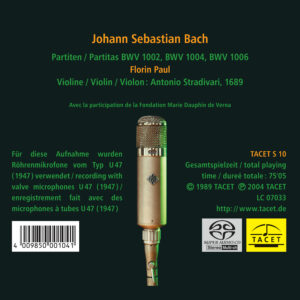
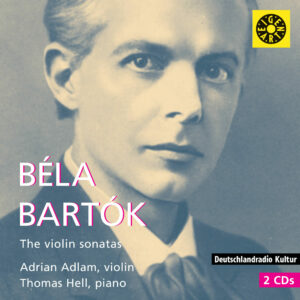
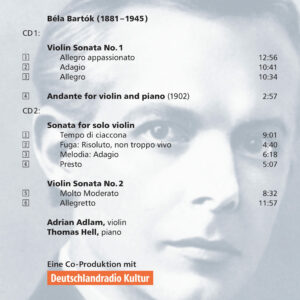
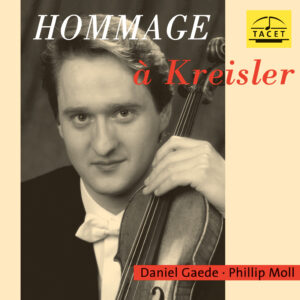
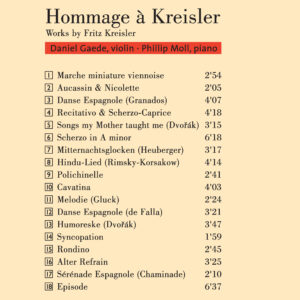
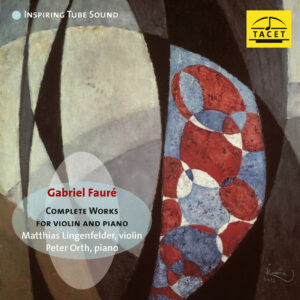

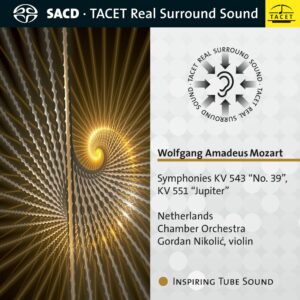
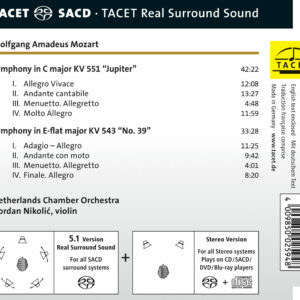

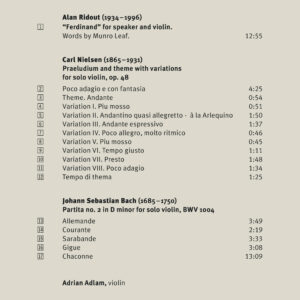
Classical CD Choice –
In their customary piquant technique of placing the listener dead centre in the surround sound mix, this is a novel and ear-pleasing approach to an over-familiar masterpiece. A lithe and lean performance enhances the experience.
Fanfare-Magazin –
As I write this review (summer 2008), arkivmusic.com lists 223 recordings of Vivaldi’s The Four Seasons. Add to that number the recordings that are no longer available, and recordings of just a single concerto or even just a single movement. There are recordings made in the studio, before an audience, on period instruments, on modern instruments, and some novelty transcriptions such as the "Koto Vivaldi" played by the New Koto Ensemble of Tokyo. Most recordings detach the four descriptive concertos from the larger work Il cimento dell’Armonia e dell’Inventione, op. 8; published in 1725 when Vivaldi was 47. We also have The Four Seasons available on a number of DVDs, and now in surround sound. Arkivmusic.com lists eight SACD Four Seasons, not counting this new TACET, which has “TACET Real Surround Sound” written three times on the cover. Three! The cover art also features an artist’s rendering of a vacuum tube and we are told: "Tube Only / Transistorfrei." To make certain we appreciate the sonics of this disc, when the CD is removed from the case, on the reverse side of the back liner card is written "The TACET sound—sensuous and subtle."
There are audiophiles who maintain that vacuum tubes deliver a sound that is warmer and more natural than the sound reproduced from transistors. Whether that is true for your ears or not, the sound on this TACET release is very good, especially when played on equipment capable of separating the sound into the five channels. Very little use, if any, is made of the subwoofer, so the music does not have a bass-heavy thunder found in some 5.1 recordings, yet is still rich and full, with pleasing overtones and acoustic resonance. Musicians and concertgoers will notice that the instruments are arranged in a circle surrounding the listener rather than the usual arrangement where the musicians appear in the front speakers and the rear speakers capture sounds that resonate to the back of the hall. Playing this disc while sitting in the center is a unique listening experience that allows the listener to experience each of the instrumentalists individually and almost forces one to listen closely.
I liked the performance too. The Polish Chamber Philharmonic and soloist Daniel Gaede reached into the "text" of The Four Seasons and brought out the many moods and details. There is an unforced, conversational quality to the playing, in many places a dance-like lilt, in others a soulful reflection. The booklet (after many pages discoursing about the sensuous sound and many photographs of microphones and sound equipment) details the musical descriptions of each concerto. The booklet reads, "Descriptions (probably by Vivaldi himself) of what is depicted in the music can be located in a number of sources (as indicated exclusively in the SACD version)." These descriptive passages can be accessed by index numbers, presuming you have a CD player that acknowledges index numbers. Most are musical depictions of animals, precipitation, and climate, except for the “Autumn” Concerto that deals with villagers, drunkards, and hunting. To illustrate: here are the musical descriptions of the "Spring" Concerto: song of the birds; trickling of the springs; thunder; song of the birds; murmuring of leaves and plants; and country dance. Raise your hand if you knew this.
I liked everything about this disc. I don’t know if I found the sound sensuous, but it was extraordinarily pleasing to the ear and the performances were equally pleasurable. Since The Four Seasons only runs about 40 minutes, two other Vivaldi violin concertos are appended. They are performed with the same good taste and lilt as are the better-known Seasons concertos.
David L. Kirk
Ultra Audio –
Recently, a new hybrid multichannel SACD of music by Vivaldi arrived from Tacet. "Ho-hum," I thought, "another Four Seasons." Then I saw the announcement on the cover: "Tube Only/Transitorfrei." Now, that was interesting. How would a disc produced only with tubed equipment sound when played through a digital medium and my all-solid-state Outlaw amplification system?
Vivaldi’s most famous work is a set of four violin concertos that actually comprises only the first third of a set of 12 concertos with the overall title Il Cimento dell’Armonia ed dell’Invenzione (The Contest Between Harmony and Invention). The entire cycle contains wonderful, arresting music, but the first four concertos are unique in comprising miniature tone poems that describe the four seasons of the year. To capture the different characteristics of each season, Vivaldi requires the string players to use many different effects, from the fairly familiar plucked strings (pizzicato) to the less often heard "glassy" sound one gets by bowing right next to the violin’s bridge.
Depending on the performer, The Four Seasons can contain myriad intricate variations of sound, which makes it an ideal work for audiophile recording. Especially since the advent of stereo recording in the 1950s, the work has always been popular. One of the first stereo recordings of any repertory that I remember was an audiophile stereo LP of The Four Seasons performed by violinist Jan Tomasow and I Solisti di Zagreb, conducted by Antonio Janigro. Those performances contained little drama; the intention seemed instead to be to make "beautiful music." In the years since, we’ve learned more about Baroque conventions of performance, improvisation, and ornamentation; nowadays, musicians strive not only to convey the beauty of Vivaldi’s writing but also his dramatic way of accurately indicating each image of the season being depicted. (For the publication of The Four Seasons in 1725, Vivaldi wrote detailed program notes, in the form of a sonnet for each concerto, describing precisely which aspect of each season was being musically represented.) The Tacet recording certainly succeeds in that respect. Violinist Daniel Gaede, conductor Wojciech Rajski, and the musicians of the Polish Chamber Philharmonic Orchestra fully realize the composer’s stated intentions. When they play the opening Allegro of La Primavera (Spring), I feel lighthearted and optimistic; when they play the opening of L’Inverno (Winter), I shiver with cold.
But no matter how great a performance, sound makes a difference, and these musicians had nothing to worry about: Tacet’s founder, producer, and engineer, Andreas Spreer, is fastidious about his recording methods, and does not disappoint here. The instruments are heard so clearly that I can follow each individual line and all of the "special effects," a few of which are mentioned above. There are absolutely delightful nuances within nuances. The recording is as subtle as these performances.
For example, in his accompanying sonnet, Vivaldi describes the second movement of L’Inverno: "To remain in quiet contentment by the fireside while outside it is raining." The solo violin plays a "contented" cantabile melody, the first and second violin parts are marked pizzicato for the raindrops, the cello and bass provide a warm pizzicato underpinning, and in the violas, a high, sustained "white" tone is the cold of winter. The harpsichord provides delicate counterpoint to the solo violin’s tune. In this demonstration-caliber recording, all of these gradations are clear as can be.
The harpsichord deserves special mention. Often in recordings of Baroque music, it seems to have its own separate microphone, and while this can make for some lovely sounds, the instrument is not a loud one as a rule. Spreer’s balance is absolutely right for my money: the harpsichord is heard from within the small string orchestra, not as a soloist.
While this hybrid multichannel disc contains standard CD tracks as well as both two- and multichannel SACD tracks, only the two-channel versions are transistor-free; they seem to have just a trace more clarity and warmth than the multichannel tracks. No matter what your setup, you’ll hear fantastic sound from this disc. But make sure you get the right edition (Tacet 0163-4), as there are two in the Tacet catalog. This one is a gem.
Rad Bennett
Audiophile Audition –
Antonio Vivaldi (1678-1741) was born in Venice, Italy, where he spent most of his professional life until falling from grace from the powers that be at that time in that city; he was widely known there as the “Red Priest.” These days Vivaldi is mostly known to us as the composer of the much transited The Four Seasons, and by a very irreverent and misinformed comment by Leopold Stokowski: “..Vivaldi...a composer who wrote the same concerto 600 times over and over...” This comment was totally out of place and the proof of its falsehood is left to the many interpreters of Vivaldi′s music today. This SACD disc is one of the best to come around in a long time in my humble opinion and pretty much falls in artistry alongside that which is considered the reference recording by I Musici (1959) with Felix Ayo in the solo violin part, on Philips. (I own a pristine tape of this recording).
I should say that I reviewed a regular CD version of the same on June 2, 2008 here as well. My opinion of the artistry of this orchestra′s realization remains firm as I stated previously but now the sound provided by Tacet takes us into another realm in reference to high resolution sound. As a "tube only" SACD recorded with Neumann M49 and Microtech Gefell UM 92.1 S microphones (which are also tube) Tacet′s real surround sound allows us to become "good listeners" in general, and "expert" and "good at listening" in particular; this is the quickest way to become a believer. A believer that sound is an integral part of the music′s drama. Furthermore, many, including yours truly, believe that a good recorded performance becomes an excellent performance only when the sound provided on the disc by the producers is commensurate to the artistry of the playing.
At the risk of repeating myself it needs to be said that Vivaldi wrote the works recorded on this disc sometimes during the mid 1720s. The present realizations by this orchestra are modern transcriptions of those works stylized for modern instruments but still keeping a harpsichord to provide the basso continuo line. Upon listening these works in the present recording there is an spatial sensation that is enhanced by the location of the orchestra′s instruments (...).
That sensation is readily transformed into an emotional sensation by way of the expert manipulation of the stringed instruments′ physical acoustics, which coupled with the virtual hall acoustics make the music dance. That dance is produced by the rhythmic syncopation that is realized as a result of the location of the instruments around the listener. This is Tacet′s "moving surround sound" – the sound moves from one speaker to another to another – it′s no longer a flat up-front speaker sound with just plain hall acoustics in the rear speakers. The fundamental sounds and concomitant hall acoustics are everywhere around the listener. We have no choice but to listen and become good listeners. Moreover, I recommend that all four corner and the center speaker be full-range speakers to really savor the wonder of Tacet′s recorded sound via Vivaldi and this great orchestra. This is a reference recording that will test anybody′s high-res system without mercy. My highest recommendation for this SACD. [Only the stereo SACD and CD options are tube-only...Ed.]
[Anmerkung: Nur die Stereo-SACD- und die CD-Spuren sind tatsächlich „Tube Only“… Anm. d. Red.]
John Nemaric
Audio –
The sensation of this recording lies in its extremely clear, direct, warm, and spacious sound. The fact that one can rediscover this oft-overplayed work afresh here is due to the transistor-free tube technology, which captures musical delicacies: violinist Gaede and his Polish colleagues play not only with great precision and finely nuanced dynamics, but also with plenty of bite and expressiveness. (...)
Andreas Fritz